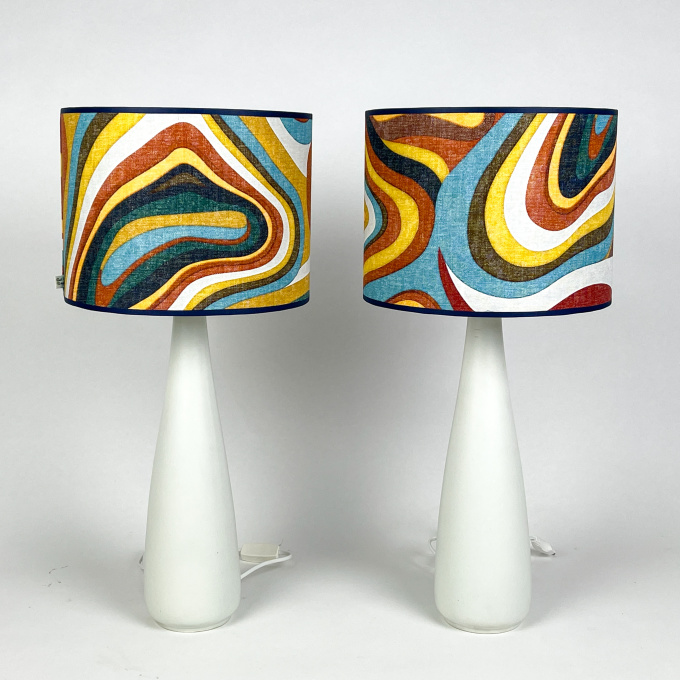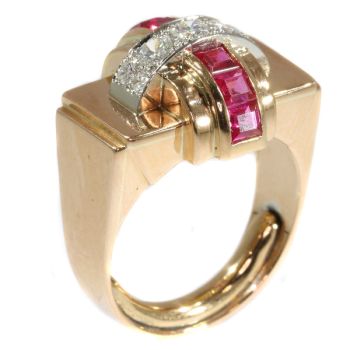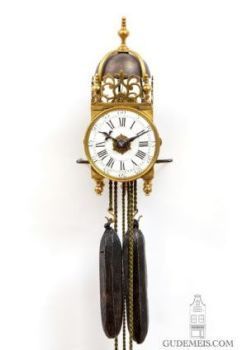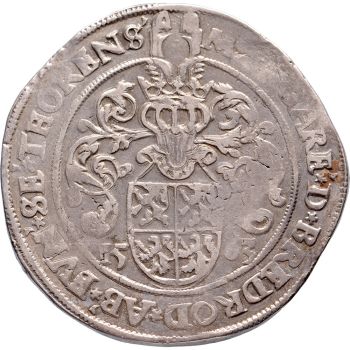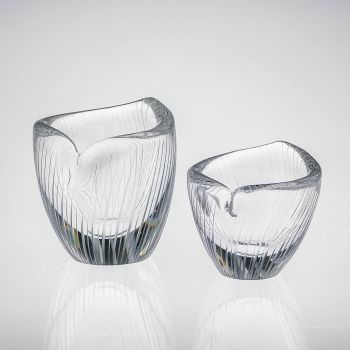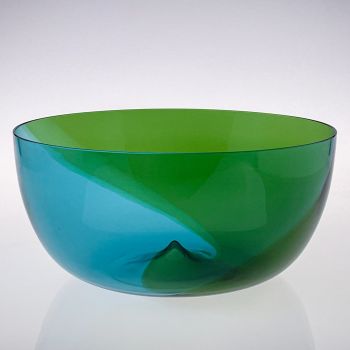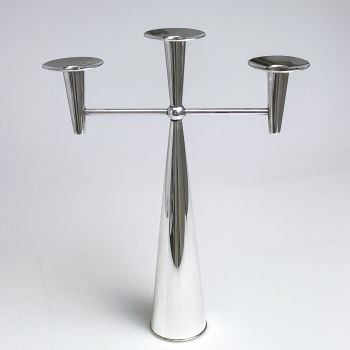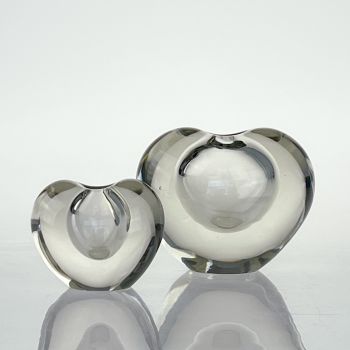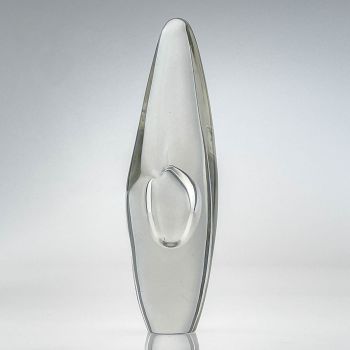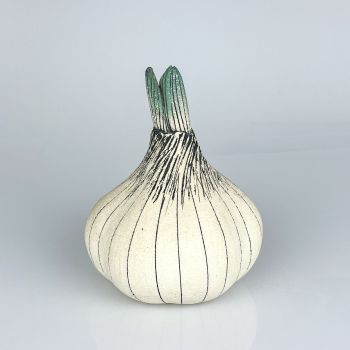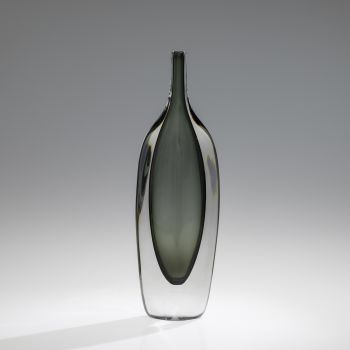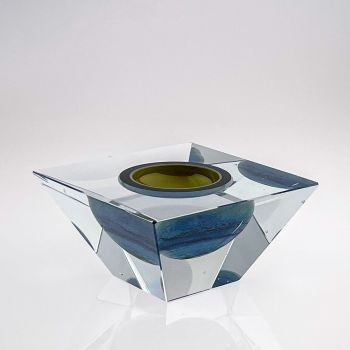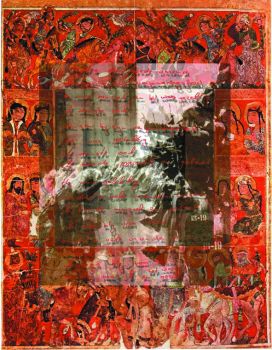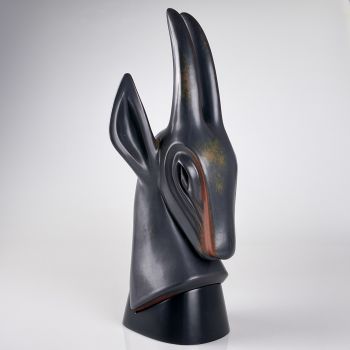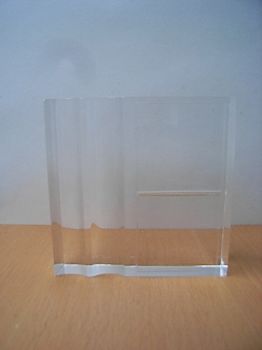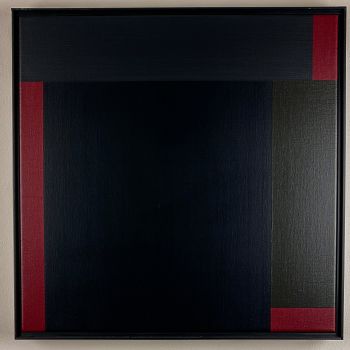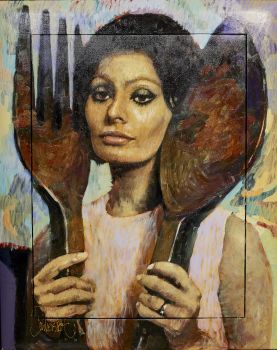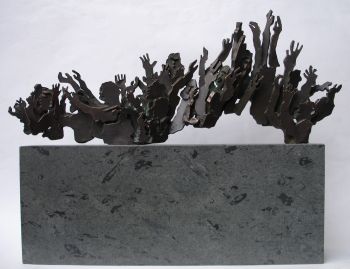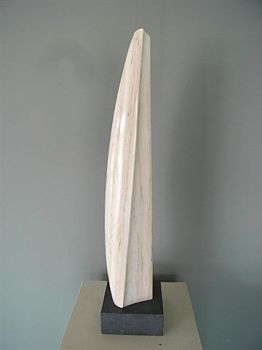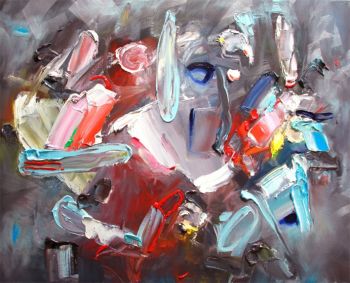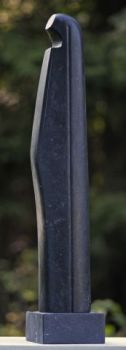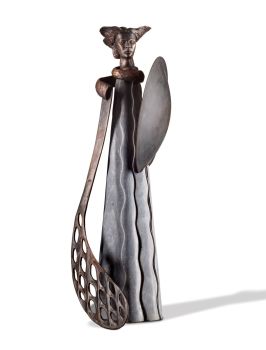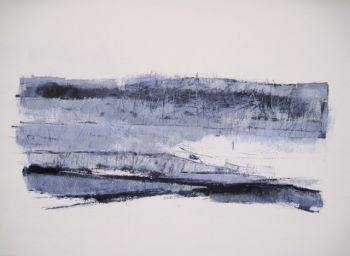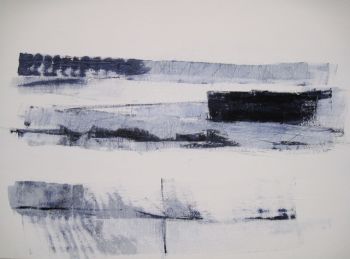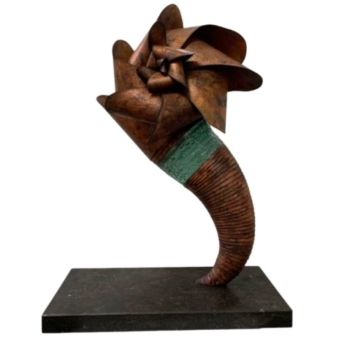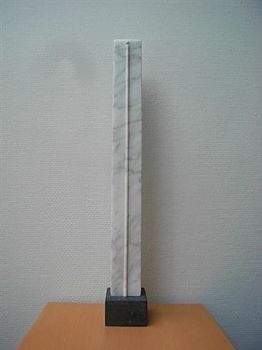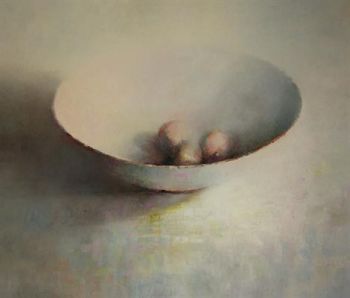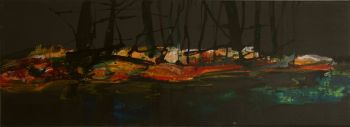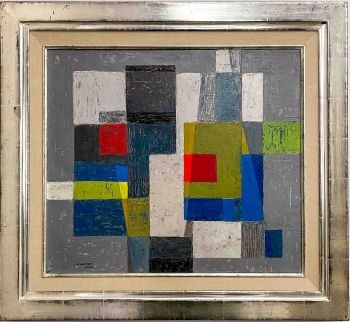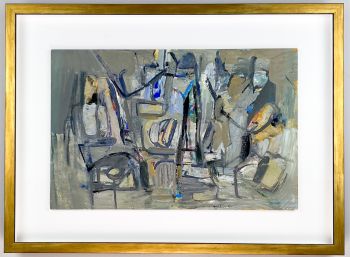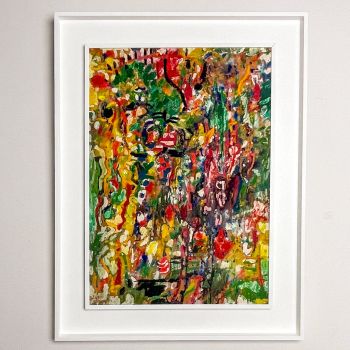Two stoneware tablelamps with bespoke lampshades – Arabia, Finland between 1964-1971 1964 - 1971
Unknown artist
StoneTextileStoneware
64 cm, ø 30 cm
ConditionVery good
€ 1.350
Van Kerkhoff Art
- About the artworkA pair of glazed white stoneware tablelamps with bespoke handmade lampshades. Made by Arabia, Finland between 1964 and 1971.
About Arabia
Arabia stands as one of Finland’s most cherished and renowned brands. For more than 140 years, Arabia has been an integral part of Finnish households, enriching both everyday moments and special occasions. With designs that reflect the essence of each era while retaining a timeless appeal, Arabia pieces are not only beautiful but also practical, crafted to endure the test of time.
Originally established as a subsidiary of the Swedish porcelain producer Rörstrang on November 25, 1873, the Arabia brand has seen its fair share of changes in ownership throughout its history.
Carl-Gustaf Herlitz, who had ties to Rörstrand, assumed the role of technical director in 1881. Arabia Aktiefabrik, formed as a limited company in 1885, saw Herlitz taking on the position of managing director in 1893. Notably, Thure Öberg, recruited from Röstrand during the 1890s, served as the company’s pioneering artist until his passing in 1935.
In 1916, Arabia shifted to Finnish ownership, with Carl-Gustaf Herlitz’s son, also named Carl-Gustaf Herlitz, leading as CEO until 1947. Under his guidance, Arabia flourished, becoming the largest porcelain manufacturer in the Nordic region.
From 1947 to 1990, Wärtsilä Oy owned Arabia before it was acquired by Hackman. Today, the Arabia brand finds its home within the Iittala Group, which parted ways with Hackman and was subsequently acquired by Fiskars in 2007.
Kurt Ekholm, appointed as the artistic director of Arabia’s art department in 1932, played a pivotal role in pioneering innovative tableware designs. During its peak, Arabia boasted a workforce of over 1,500 individuals and held the title of Europe’s largest porcelain factory. Additionally, Arabia manufactured toilet seats in Helsinki’s Arabianranta and Ekenäs between 1874 and 1992. However, production at the ceramics factory in Fishers came to a halt on March 18, 2016, with operations relocating overseas.
Marked
Stamped Arabia (stamp used between 1964-1971)
Execution
Arabia, Finland between 1964 and 1971
Condition
Good original condition. No chips or cracks. Wear consistent with age and use. New handmade bespoke lampshades
Literature
Marianne Aav (ed.) Arabia: Ceramic, Art, Industry
Dimensions
Each lamp
Height 64,5 cm
Diameter 30 cm - About the artist
It might happen that an artist or maker is unknown.
Some works are not to be determined by whom it is made or it is made by (a group of) craftsmen. Examples are statues from the Ancient Time, furniture, mirroirs, or signatures that are not clear or readible but as well some works are not signed at all.
As well you can find the following description:
•“Attributed to ….” In their opinion probably a work by the artist, at least in part
•“Studio of ….” or “Workshop of” In their opinion a work executed in the studio or workshop of the artist, possibly under his supervision
•“Circle of ….” In their opinion a work of the period of the artist showing his influence, closely associated with the artist but not necessarily his pupil
•“Style of ….” or “Follower of ….” In their opinion a work executed in the artist’s style but not necessarily by a pupil; may be contemporary or nearly contemporary
•“Manner of ….” In their opinion a work in the style of the artist but of a later date
•“After ….” In their opinion a copy (of any date) of a work of the artist
•“Signed…”, “Dated….” or “Inscribed” In their opinion the work has been signed/dated/inscribed by the artist. The addition of a question mark indicates an element of doubt
•"With signature ….”, “With date ….”, “With inscription….” or “Bears signature/date/inscription” in their opinion the signature/ date/ inscription has been added by someone other than the artist
Are you interested in buying this artwork?
Artwork details
Related artworks
- 1 - 4 / 12
- 1 - 4 / 24
 Curated by
Curated byDanny Bree
Unknown artist
A rare Japanese export lacquer medical instrument box1650 - 1700
Price on requestZebregs & Röell - Fine Art - Antiques
1 - 4 / 24- 1 - 2 / 2
- 1 - 4 / 24
- 1 - 4 / 12

